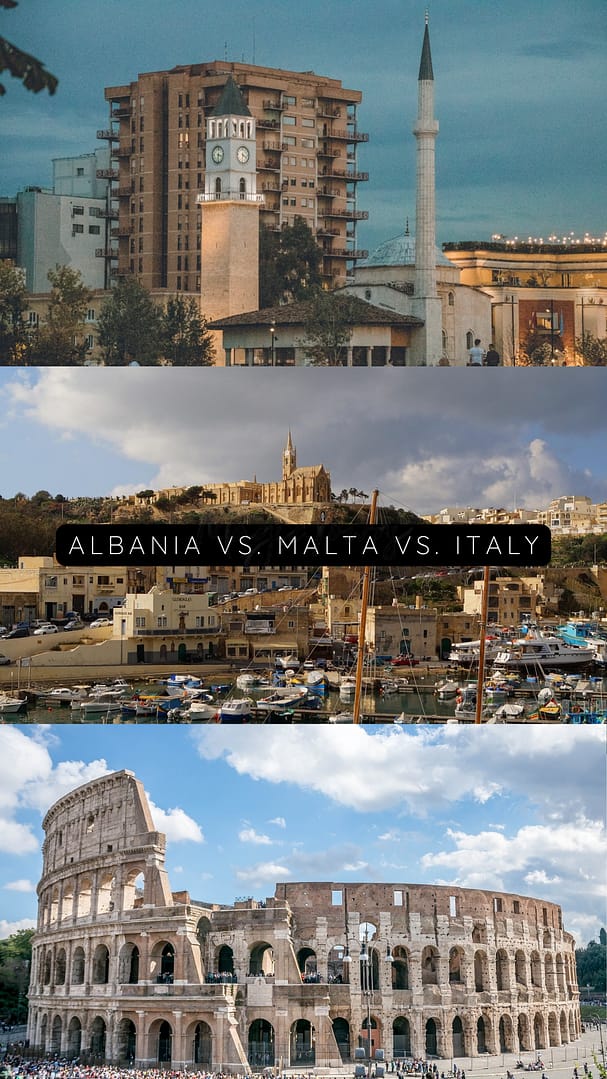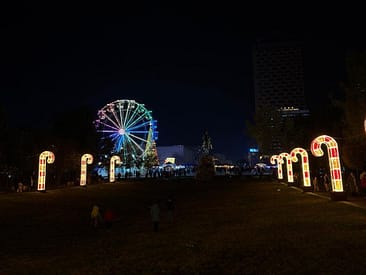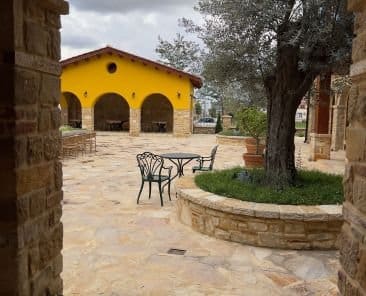In collaboration with my colleagues based in Malta and Italy, we wanted to paint an honest, realistic picture of what life actually costs in these three countries. We’re not just showing numbers from the internet, but real examples of what we feel in our wallets and cards, based on our experiences living here.
If you’re someone trying to figure out where to live, or you’re just curious about how prices compare, this might give you some clarity, so I suggest having a read.
If you love similar content, I strongly encourage you to become a part of our Albania-loving members community, where each week, we share the latest updates & events happening across the country.
Now. let’s continue with the article:
Rent & Housing Costs
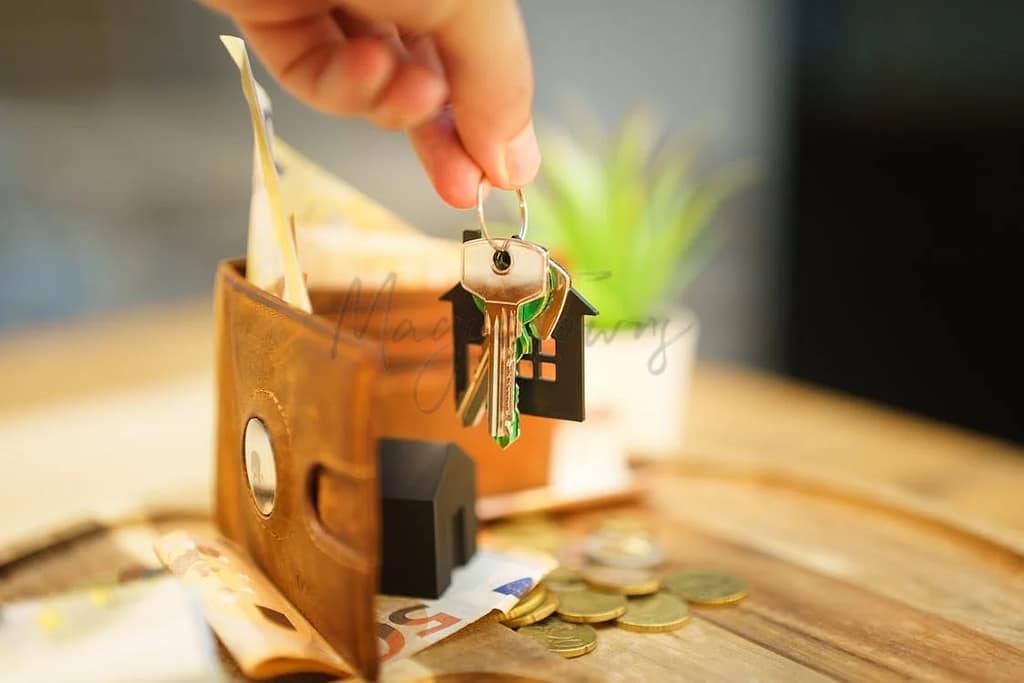
**For the prices mentioned in this article, we’re taking as a reference: Tirana, Gozo, and Rome.
Albania (Tirana)
Tirana remains affordable by European standards; however, like we’ve mentioned in our other articles, Albania is not as cheap as it used to be. A one-bedroom apartment in the city center usually rents for around €500 – €500+/month, while outside the center, you’ll find options for less. A few months ago, when I was doing some research, I found that even finding apartments around €500 was a bit challenging, in areas around the centre.
Demand is rising, but locals still dominate the market, which helps keep prices relatively stable. Buying property is also an option, especially for long-term expats, but the property prices have increased significantly this year. You can read more about this topic here:
[Exclusive] Tirana Property Prices Surge by 50% in One Year: 2024 vs. 2025 Data
Malta (Valletta/Sliema Area)
According to 2025 expatax.mt reports, prices in Malta’s capital region are high and continue to rise.
- A studio or small 1-bedroom in central areas like Sliema/St. Julian’s now costs €950–€1,000/month.
- For something more comfortable or spacious, expect €1,400/month or more.
- A 3-bedroom apartment in a good location is typically €1,600–€1,800/month.
- Even in areas like Gzira or Msida, prices are only slightly lower. The market is tight, and short-term rental demand doesn’t help
Italy (Rome)
Rome has a wide range of options, but it’s not a cheap city:
A standard 3-bedroom apartment near the center can go up to €2,000/month in popular neighborhoods.
A central one-bedroom apartment averages €1,100–€1,300/month, depending on the area (Trastevere, Monti, Prati, etc.).
Outside the center, prices drop to €700–€900/month.
To conclude it, we’ve summarized the renting prices spread across the three countries:
| Cities | One-bedroom Centre | One-Bedroom (Outside Centre) |
| Tirana | €500-to €500+ | €250–€350 |
| Valletta | €950–€1,400+ | €800–€1,000 |
| Rome | €1,100–€1,300 | €700–€900 |
Grocery Shopping & Eating Out
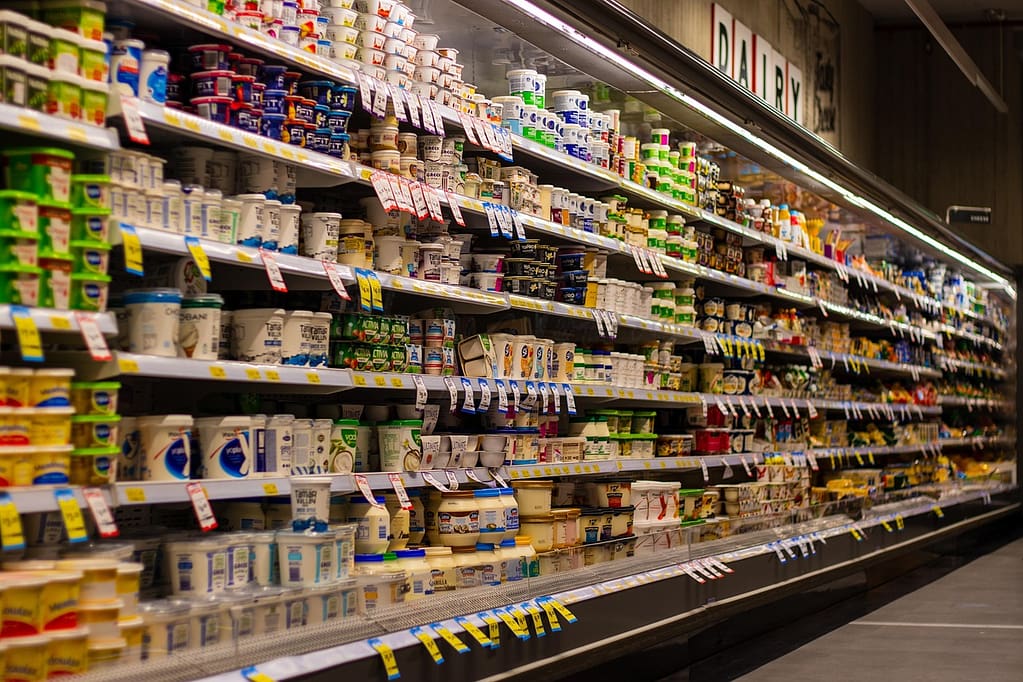
Tirana
Food in Tirana is somehow affordable and fresh (if you know where to buy it). Groceries from local markets can cost around €180/month for one person. (To clarify, this all depends on your standards, the kind of foods you prefer to eat etc. For example, if you shop in places that have a higher standard, like Baronesha, which imports products from the US, expect higher prices compared to local markets.) Eating out is also a treat: you can enjoy a proper meal at a decent restaurant for €10–€15, and a coffee for around €1.
How Much Money Do You Need to Live Comfortably in Tirana?
Valletta/Sliema
In Malta, groceries are notably more expensive, especially anything imported. A monthly grocery bill can easily go over €250, and you’ll quickly notice the difference at checkout. Eating out is also costly: most restaurants charge €20–€30 per meal, and a basic coffee costs €2.50–€3.50.
Rome
Italy sits in the middle. Grocery prices vary depending on whether you shop in local markets or supermarkets, but plan to spend around €200–€250/month. A cappuccino in Rome will cost €1–€1.50, and you can still get a decent plate of pasta for €10–€15 if you avoid tourist traps.
Getting Around
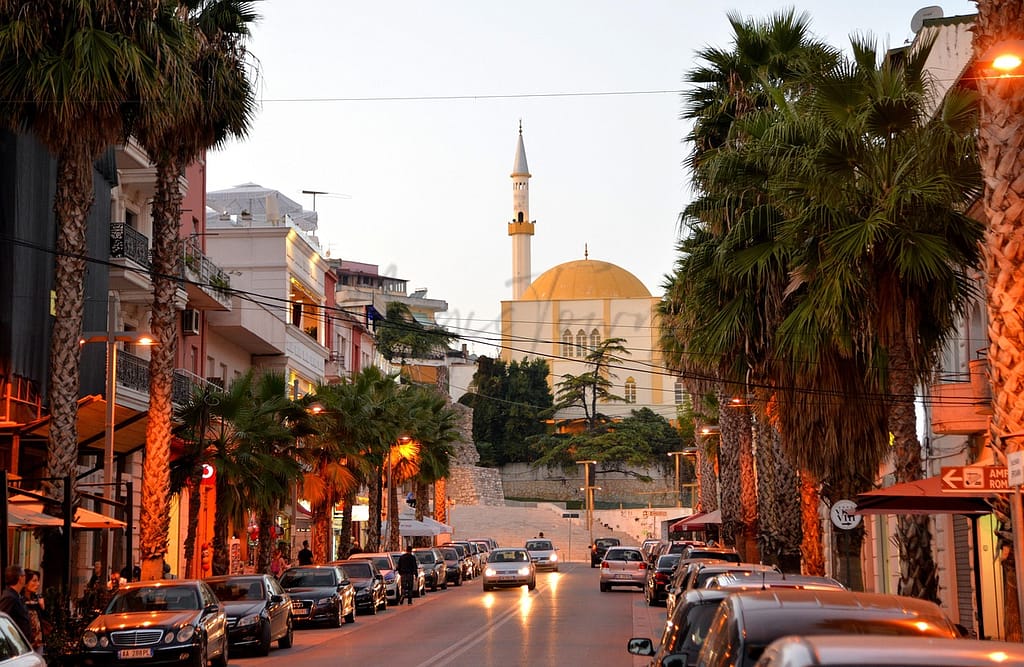
Tirana
Public transport is limited to buses, but they’re cheap, just €0.40 per ride. A monthly pass is around €16. Taxis and rideshares are also affordable compared to some European countries, but traffic can be frustrating. Most people walk or drive.
Valletta/Sliema
Malta uses a modern but sometimes unreliable bus system. A standard fare is €2, or €0.75–€1.50 if you use the tallinja card. A monthly pass is €26, which is quite fair. Many residents still prefer using their cars, though, expect busy roads and limited parking.
Rome
Rome has the most developed transport system of the three: metros, trams, and buses are well-connected. One-way rides cost €1.50, and a monthly pass goes for €35–€50, depending on your age and discounts. If you drive, though, be prepared for expensive parking, fuel (around €1.85/L), and ZTL zones.
Yes, there are metros and buses around the city, but buses aren’t very reliable, and sometimes they just don’t show up. Traffic is always heavy, so if you need to get from one place to another (even for short distances), it’s best to leave more than an hour in advance just to be safe
Utilities & Internet

Tirana
Utilities (electricity, heating, water) cost around €50–€90/month depending on season. Internet is fast and cheap, around €20–€25/month for unlimited WiFi. Mobile plans are also low-cost.
Valletta/Sliema
Utilities are pricier here, averaging €90–€130/month, especially in summer due to A/C use. Internet plans usually cost between €25–€35/month, and phone unlimited plans €30-€35.
Rome
Expect to pay around €100–€150/month for utilities in Rome, and €25–€40/month for decent internet. Mobile plans are competitive and often include international minutes.
Lifestyle & Leisure Costs

Tirana
A gym membership can be as low as €25/month (depending on the gym and the plan; high-quality gyms cost around €46 and up). Cinema tickets cost around €8, events have different prices, for example, a pottery class is around €25/person.
Valletta/Sliema
Expect to pay €50–€70/month for a gym, and €8–€10 for a cinema ticket.
Rome
Rome’s gyms cost about €35–€60/month, and cinema tickets range from €7–€10. Bars and cafés vary, but prices are fairly consistent with big European capitals.
Planning to relocate to Albania? Listen to real-life stories from expats who’ve made the move.
Which Capital Is Right for You?
Well there is not a one-fits-all kind of answer to this question, but of course, there are a few pointers I could highlight, such as:
- If you’re someone who values affordability and a quieter lifestyle, Tirana might surprise you. It’s a hidden gem for remote workers.
- If you’re looking for Mediterranean charm and an English-speaking community, Malta could work, as long as your budget is strong.
- If culture, history, and a vibrant urban life are your priorities, Rome is hard to beat, but prepare for the costs that come with it.
Sometimes the choice isn’t just about what you can afford, but what kind of daily life feels right. Hopefully, this breakdown helps you feel a little more confident in your decision.
-

Sara embodies the definition of creativity in her role as a content creator on our team. As a native Albanian, she focuses on writing qualitative pieces, mostly well-researched articles and informative blog posts. She also plays a key role in creating engaging social media posts to build a like-minded community of Albanian lovers and keep them engaged. Her qualifications, among others, include a Reuters-accredited certificate in journalism, language certification, internship experience in Bucharest, and training in digital marketing. If Sara’s not on her desk creating content, you might find her reading a good book or penning her thoughts in her diary.
You can also find her words on Momentum Group, Bulls Media Albania, 112hub, and Ajroni.

